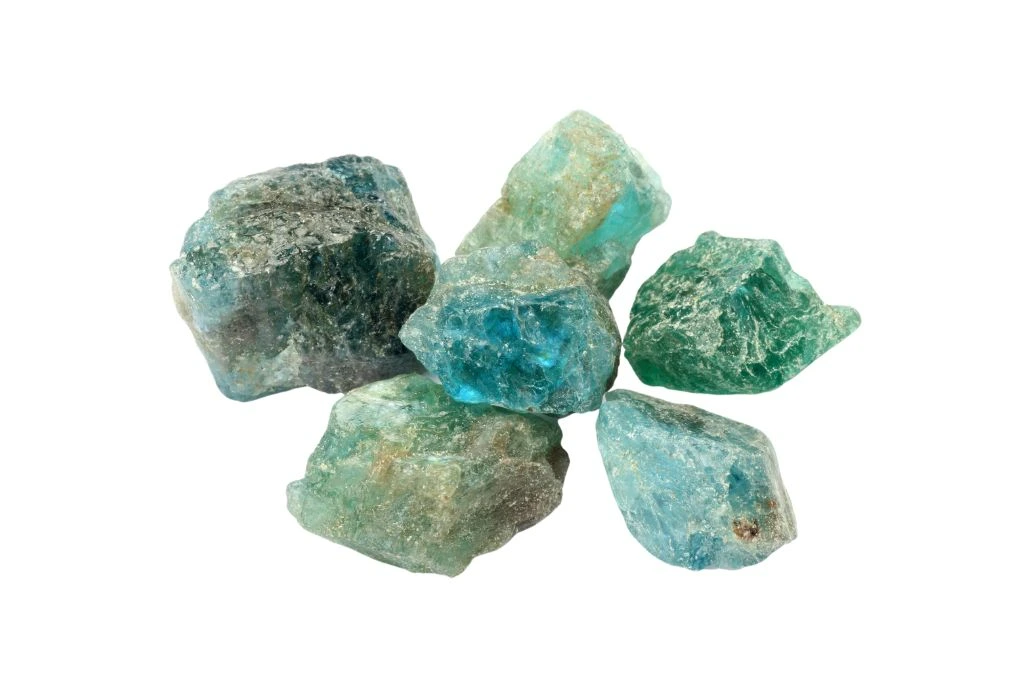Apatite’s Vibrant Color Palette
Apatite is renowned for its stunning array of colors, ranging from deep blue-green to yellow, brown, and even pink. The most prized and sought-after variety is the neon blue-green apatite, which often resembles the alluring hues of Paraiba tourmaline. This eye-catching color has made apatite increasingly popular among gemstone enthusiasts and jewelry designers alike.
Crystal Structure and Form
Apatite typically forms hexagonal crystals, often appearing as short to long prismatic shapes. These crystals can vary in size from microscopic to several centimeters in length. In some cases, apatite may also occur in massive form or as granular aggregates. The crystal’s structure contributes to its moderate hardness, ranking 5 on the Mohs scale, making it suitable for various jewelry applications when properly cared for.
Optical Properties and Luster
One of the most captivating aspects of apatite is its vitreous to subresinous luster, which gives the stone a glass-like appearance when polished. This characteristic, combined with its transparency to translucency, allows light to interact with the crystal in fascinating ways. Apatite also exhibits pleochroism, meaning it can display different colors when viewed from various angles, adding to its visual intrigue.
Unique Inclusions and Phenomena
Apatite often contains inclusions that can enhance its beauty and uniqueness. Some specimens feature cat’s eye effect (chatoyancy) when cut en cabochon, creating a mesmerizing band of light across the stone’s surface. Additionally, some apatite crystals may display asterism, a star-like optical phenomenon, further distinguishing this gemstone from others in the mineral world.
Historical and Cultural Significance of Apatite
Apatite, derived from the Greek word “apate” meaning deceit, has been valued for centuries due to its varied colors and properties. Ancient civilizations used apatite in jewelry and decorative objects, often mistaking it for more precious gems like aquamarine or peridot. In some cultures, apatite was believed to enhance creativity and intellectual abilities, making it a favored stone among artists and scholars.
Metaphysical Associations
In the realm of crystal healing and metaphysics, apatite is often associated with manifestation, personal growth, and spiritual attunement. It is believed to stimulate the throat chakra, enhancing communication and self-expression. Many practitioners claim that apatite can help overcome feelings of apathy and motivate individuals to pursue their goals with renewed vigor. Additionally, it is thought to promote clarity of mind and aid in accessing past life memories.
Common Uses and Benefits
Apatite finds applications in both traditional and modern contexts. In jewelry making, it is prized for its range of colors, from deep blue to yellow and green. As a healing stone, apatite is often used in meditation practices to enhance focus and insight. Some alternative health practitioners recommend wearing apatite jewelry or carrying the stone to boost metabolism, suppress hunger, and aid in weight loss efforts. In scientific and industrial applications, apatite is used in the production of phosphorus and fertilizers, highlighting its importance beyond metaphysical realms.
Modern Applications
Today, apatite continues to gain popularity in the wellness and self-improvement communities. It is frequently incorporated into holistic healing practices, such as Reiki and crystal grid work. Many individuals use apatite as a tool for personal development, believing it can help overcome procrastination and increase motivation. In the tech industry, synthetic apatite is being explored for potential use in laser technology and optical devices, showcasing its versatility across various fields.

